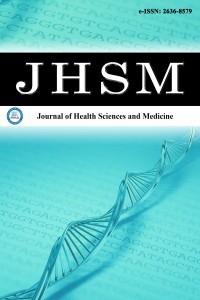
Journal of Health Sciences and Medicine
Yazarlar: ["Kadir KARKİN", "Ediz VURUŞKAN"]
Konular:-
DOI:10.32322/jhsm.1050771
Anahtar Kelimeler:Family medicine,Cancer screening,Prostate cancer,Prostate spesific antigen
Özet: Objective: To retrospectively evaluate the two-year records of patients referred to Adana City Training and Research Hospital by family physicians because of high prostate specific antigen (PSA), and to reveal the profile and related outcomes for clinical practices of family physicians about prostate cancer screening. Material and Method: The files of 102 patients, who were referred to our clinic by their family physicians due to high PSA between April 2019 and May 2021, were retrospectively evaluated. Demographic data of patients, presence of additional disease, family history, control serum PSA value examined in family medicine centers and in our hospital at time of first admission, complete urinalysis (TIT), ultrasonography (USG) and multiparametric magnetic resonance (mpMR) findings, transrectal ultrasonographic biopsy (TRUS-BX) results and biopsy were noted. The treatments administered according to the results (radical prostatectomy, radiotherapy, hormone therapy, chemotherapy) were recorded. Results: The mean age of the patients was 52.8±8.9 years. The PSA value of the patients at time of admission was 8.0±3.8 ng/ml. The mean PSA values measured at the time of admission to primary care and at the time of admission to Adana clinic after referral were 8.0±3.8 ng/ml and 8.0±3.0 ng/ml, respectively. There was no statistically significant difference between these values (p=0.2). Among all the patients presenting with elevated PSA, 36 (35%) patients underwent TRUS Bx, had prostate cancer as a result of pathology and underwent radical prostatectomy, which was the most common definitive treatment method with statistical significance (p<.001). The sensitivity value obtained from the ROC curve calculated based on the initial PSA value of the patients was 68.09 years and the specificity value was 48.15 years. At the same time, the cut-off PSA value calculated by examining the area under the ROC curve was determined to be <7.5 ng/ml. Conclusion: An individualized, risk-adjusted strategy for screening should be determined. A shared decision-making process with the patient should be adopted, along with explaining the reasons for and consequences of PSA screening.